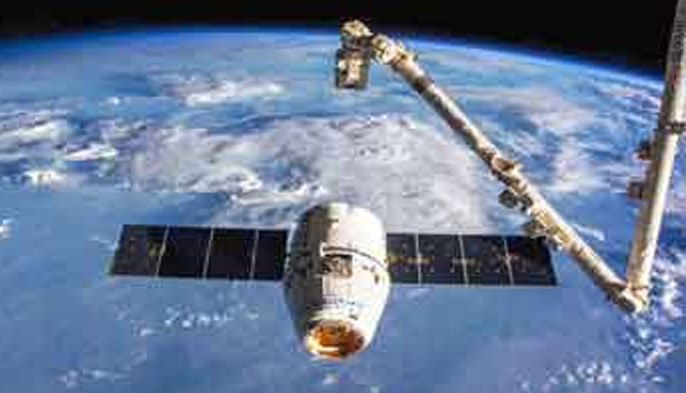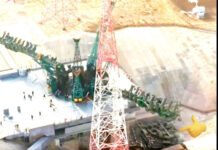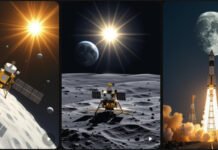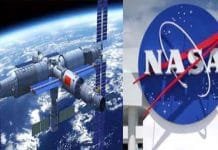India’s Shukrayaan: A Game-Changing Venus Mission Slated for 2028
India is set to make a groundbreaking leap in space exploration with its first mission to Venus, scheduled for launch in March 2028. Known as Shukrayaan-1, this mission is poised to deepen our understanding of Venus, often referred to as Earth’s “twin” due to its similar size and composition. Approved by the Indian government on September 19, 2023, the mission will last for four years, focusing on studying the planet’s atmosphere, surface, and unique rotation dynamics.
Why Venus? The Twin Planet of Earth
Venus, located about 40 million kilometers from Earth, has long intrigued scientists. Despite its surface similarities to Earth, its extreme environment sets it apart. One of the most interesting aspects of Venus is its slow rotation. A single day on Venus is equivalent to 243 Earth days, a phenomenon caused by its sluggish spin on its axis. What’s more, Venus rotates in the opposite direction of most planets, including Earth. This means that, on Venus, the Sun rises in the west and sets in the east—a stark contrast to our own planet.
Another notable feature of Venus is its hostile environment. With temperatures reaching over 470°C and an atmosphere comprised primarily of carbon dioxide, Venus is a hellish world where no lander has survived for more than two hours due to the intense heat and crushing atmospheric pressure, which is akin to the pressure experienced at 900 meters underwater on Earth.
Shukrayaan’s Mission Goals: A Comprehensive Study of Venus
The primary goal of Shukrayaan-1 is to study Venus’s orbit, surface, and atmosphere in greater detail than ever before. This mission will significantly advance our understanding of how solar radiation impacts Venus, a planet that lies closer to the Sun than Earth. By investigating how solar winds and radiation influence the planet, we can better comprehend the delicate balance of atmospheres across all rocky planets, including Earth.
Atmospheric Analysis and Surface Mapping
One of the mission’s key objectives is to conduct a thorough analysis of the atmosphere of Venus, including its ionosphere—the outer layer where communication signals are reflected. By studying this region, scientists aim to learn how solar radiation interacts with the planet’s atmosphere and what role it plays in shaping the planet’s weather and long-term climate.
The mission will also focus on detailed surface mapping of Venus. Despite its cloud-covered atmosphere, radar technology will allow the spacecraft to peer through and examine the topography and geological formations beneath. Understanding the surface of Venus could offer valuable insights into the planet’s volcanic activity and tectonic history, which, in turn, may shed light on the early geological evolution of Earth and other terrestrial planets.
The Unique Challenges of Exploring Venus
The mission to Venus presents several significant challenges. Venus’s surface temperature, which averages around 470°C, is high enough to melt lead. Moreover, the planet’s thick atmosphere creates surface pressures 92 times greater than Earth’s, making it one of the most extreme environments in the Solar System. To put this in perspective, the pressure on Venus is comparable to the pressure experienced nearly a kilometer below the Earth’s ocean.
Given these hostile conditions, landing on Venus is not a viable option for this mission. In the past, Soviet Venera missions attempted to land on Venus, with some success. However, no lander has been able to function for more than a few hours before succumbing to the planet’s extreme conditions.
Shukrayaan-1 will, therefore, remain an orbiter mission, tasked with gathering as much data as possible from the relative safety of Venus’s orbit. This data will not only inform our understanding of Venus but will also be used to plan future missions to the planet, potentially including a lander capable of surviving the extreme environment for longer periods.
Understanding Venus’s Rotation: A Puzzle for Scientists
One of the most peculiar aspects of Venus is its retrograde rotation. Unlike Earth and most other planets in the Solar System, Venus spins in the opposite direction, which means that if you were standing on the surface of Venus, you would see the Sun rise in the west and set in the east. This retrograde rotation remains one of the greatest mysteries in planetary science.
Additionally, as mentioned earlier, a single day on Venus lasts 243 Earth days, while its year (the time it takes to orbit the Sun) is only 225 Earth days. This means that a Venusian day is longer than its year, a unique feature that will be closely studied during the Shukrayaan mission.
Scientists are particularly interested in understanding why Venus rotates so slowly and in the opposite direction. Could it be the result of a massive impact in the planet’s early history, or is there a more subtle explanation involving the interaction of the planet’s atmosphere and its solid body? Shukrayaan’s data may provide crucial clues to solve this enduring mystery.
The Impact of the Sun on Venus: A Key Focus of Shukrayaan
Given that Venus is closer to the Sun than Earth, it experiences more intense solar radiation and solar winds. Understanding how these forces interact with Venus’s atmosphere will be one of the key scientific goals of the Shukrayaan mission.
The ionosphere of Venus will be a focal point of study. This outer atmospheric layer is where solar particles interact with atmospheric molecules, leading to a complex interplay of charged particles and magnetic fields. Studying these interactions will not only enhance our understanding of Venus but could also provide insights into how solar radiation affects Earth’s atmosphere.
The mission aims to shed light on how solar energy is absorbed, reflected, and redistributed across Venus’s atmosphere and surface, offering critical insights into the dynamics of planetary atmospheres in close proximity to stars.
India’s Growing Role in Space Exploration
Shukrayaan-1 is yet another example of India’s expanding presence in space exploration. Following the successes of the Mars Orbiter Mission and Chandrayaan missions, ISRO (Indian Space Research Organisation) is now poised to take on Venus, further solidifying its reputation as one of the world’s leading space agencies.
With the Shukrayaan mission, India will join an elite group of nations, including the United States, Russia, and Europe, that have launched missions to Venus. This venture also highlights India’s growing ambitions in planetary science and space exploration.
The Promise of Shukrayaan-1
India’s Shukrayaan-1 mission to Venus is set to be a transformative milestone in the study of planetary atmospheres, surface geology, and solar interactions. As the mission prepares for its March 2028 launch, it promises to deliver groundbreaking discoveries about Venus’s mysterious environment and complex behavior. By studying Venus, scientists hope to gain new insights not only into the past and present of Earth’s twin but also into the broader processes that govern the evolution of rocky planets in our Solar System.
















